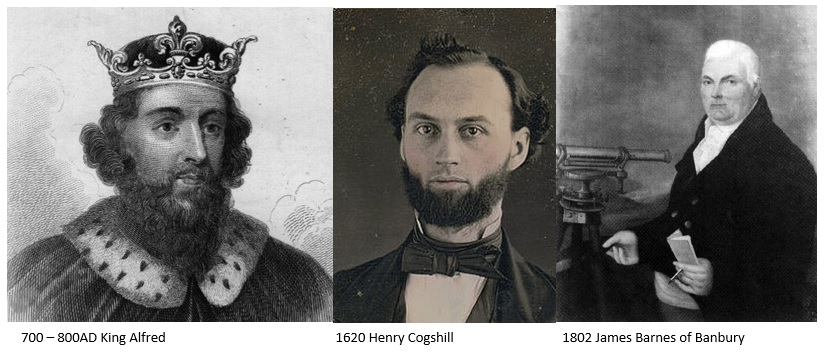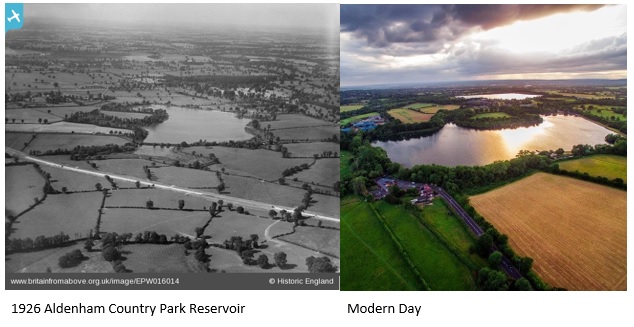Steeped in history
Being only 12 miles from central London it is no surprise that like London, Aldenham Country Park is steeped in history.
Aldenham Country Park lies in what was the medieval Aldenham Common which was the largest of several commons within the Manor of Aldenham. The name derives from Eladeham, meaning either ‘old home’ or Ealda’s home’. Over the years it was enhabited and/owned by King Offa in 785 AD. In the 9th century it was annexed by the Danes and was later reclaimed by King Alfred. During the Norman Conquests the Abbey of St Alban leased it to the Abbey of Westminster.
Following the dissolution of the Monasteries in 1539 a series of owners followed; in 1620 Henry Cogshill built a house called Wigbournes (probably where Haberdashers Aske’s Boys School now stands), then Sir Henry Carey (the first Lord Falkland) owned the land, followed by Lord Hollis and in the late 19th century Henry Hicks Gibbs, head of a local banking family who became Baron, Lord Aldenham in 1896.
The estate remained intact until the end of the Second World War when much of it was sold. The mansion and its immediate grounds became the Haberdashers Aske’s Boys School. Viccary Gibbs, son of the first Lord Aldenham, was a world specialist on trees and shrubs. Much of his collection was lost with the division of the estate but within the Park we still have The Avenues (a double row of Turkey Oaks flanked by hawthorn and lime) which was planted in 1880. In 1793, 68 acres of the Aldenham Estate was sold to the Grand Junction (later Grand Union) Canal Company for £2,051.

The reservoir was dug by French prisoners of war from the revolutionary wars in order to maintain the water levels in local rives after the Grand Junction Canal was built. Work finished in 1797 but the dam was badly constructed; problems of subsidence and cracking still occur today. In 1802 James Barnes of Banbury, an engineer for the company bought a further four hectares and arranged for the dam to be strengthen and to raise the dam wall for the grand sum of £400!
In the 1930’s the Grand Union Canal Company made the reservoir available for boating, bathing and fishing with car parking and informal refreshment facilities although this was halted in 1937 until 1973 when the reservoir was no longer required for drinking water. You will find the concrete base of the old pumping station in the scrub behind the dam wall.
Between 1938 and 1972 the land had various uses until the site was chosen as the county’s country park out of five possible sites and Aldenham Country Park was opened to the public in 1972. The Planning and Estates Department took over the running of the Park and continued working to maintain and enhance the Park for the public but due to a cut in government funding and resources it was likely the park would close as the Council could no longer afford to operate it. A public appeal was launched and tenders invited for an organisation to take over and make it financially sustainable.

In 2012 Aldenham Renaissance Ltd took over the management of the Park, with its formal re-launch in April 2012, thereby securing its future as a fine Country Park, open for the public to enjoy once more.
Our aim is to connect people, land and food through educational and recreational activities. We are a not for profit community interest company, so our profits are invested back into the community to enable us to keep the park running for visitors, to continue supporting various groups, work with people with disabilities, and provide education for local school groups.
Get Involved
With so much going on there are plenty of ways you can get involved as a member of our team. Have a browse of our current opportunities here.
Joint ventures and partnership
We are seeking people and organisations to form joint ventures & partnerships with us to make better use of amenities. If you would like to run relevant countryside, craft or food workshops/courses then please email This email address is being protected from spambots. You need JavaScript enabled to view it. to talk to us about your proposal.














